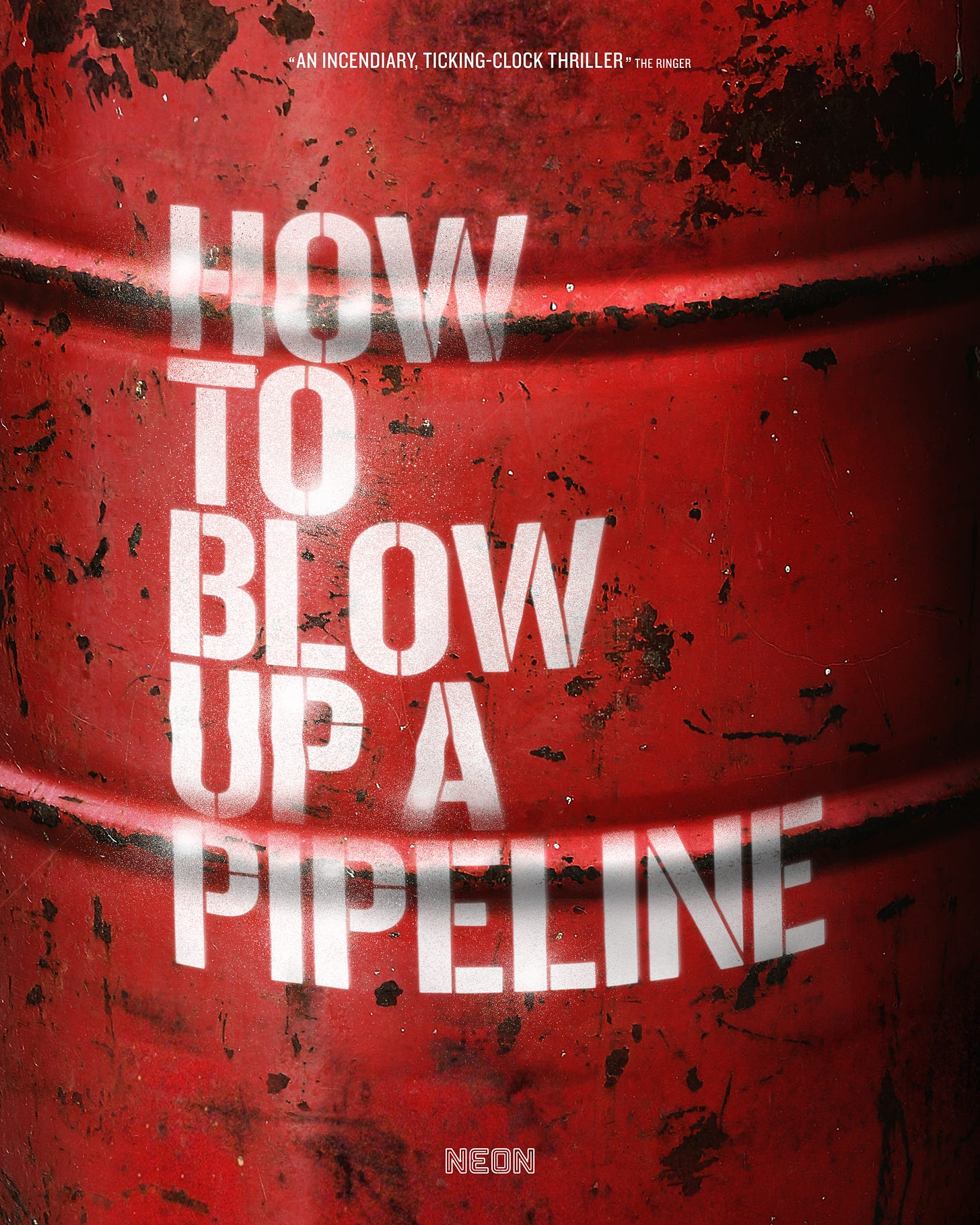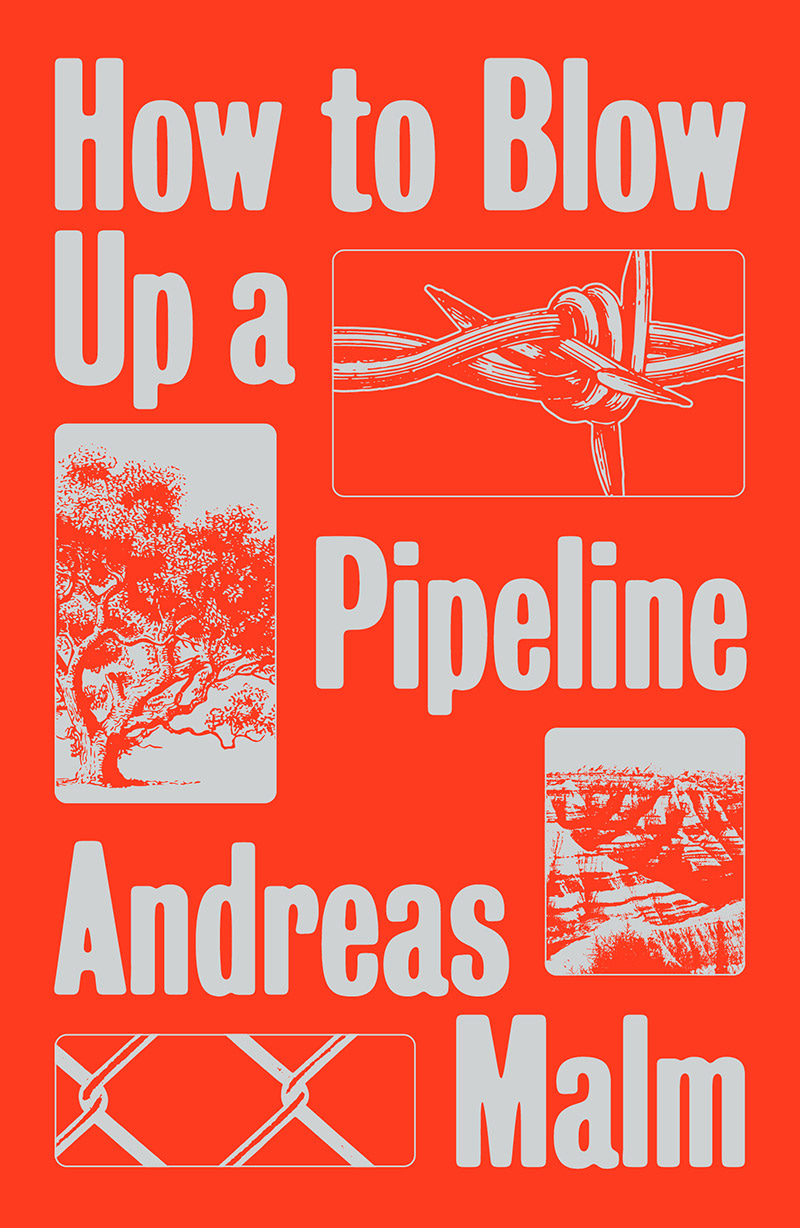“So there’s this idealistic kid who got radicalised by a shadowy religious order. They brainwashed him, trained him to fight, then encouraged him to destroy a piece of government infrastructure.”
“That’s awful. What’s the name of this terrorist?”
“Luke Skywalker.”
When I saw How to Blow Up a Pipeline at the Glasgow Film Festival they mentioned Luke Skywalker as an example of a character who authorities might label as a terrorist but who, after watching his story in Star Wars (1977), we sympathize with. For Daniel Goldhaber, the film’s director, sabotaging pipelines is the closest climate activists can get to being a Jedi.
Where the analogy falls down is that there isn’t a Death Star of carbon emissions. Global warming is what Timothy Morton calls a hyperobject. Carbon emissions are built into every aspect of our lives, they are within us and without us. Even if you are fully focused on the transition to net zero, humanity is still going to need fossil fuels to build wind turbines and solar panels. Unless we want people to freeze, we can’t just stop oil immediately. There are trade-offs involved and, wherever there are trade-offs, there are politics.
How to Blow Up a Pipeline is a heist movie loosely based on the book of the same name by Andreas Malm. I love the idea of adapting non-fiction books into fictional films. If you think that a message is important enough it is surely worth introducing it to audiences who don’t read but do want to see the human drama behind the theoretical posturing.
In the book, Andreas Malm makes a strong case that the strategic pacifism of Extinction Rebellion (XR) is based on faulty historical evidence. XR imply that all human rights struggles were non-violent, but Malm makes it clear there was plenty of violence to help make Martin Luther King and Mahatma Gandhi effective voices. He refutes the fatalism of people like Jonathan Franzen by showing that change can take place.1
Malm uses the example of The Tyre Extinguishers as effective climate activists. The Tyre Extinguishers put a lentil into the valve cap of a high-polluting SUV and add a leaflet explaining why they have done so. The idea is to make driving an SUV such a hassle that people stop doing it. In the film, a couple of the characters deflate a tyre by slashing it with a knife, which is more dramatic but less in the spirit of the book.
The other example in the book is that of Jessica Reznicek and Ruby Montoya who damaged a section of the Dakota Access Pipeline and were sentenced to 8 years in prison as a result. It is this example, though not mentioned directly, that provides the framing for the film, which otherwise comes across as a low-budget eco-version of Ocean's Eleven (2001).
Each character in the group of nine activists is given a backstory. Half of them have been inspired by a personal tragedy: the death of a parent in a heat wave, leukaemia acquired by living near a refinery, or land taken from both indigenous people. The rest are professional activists: people who have read the literature and want to save the planet. Unfortunately, none of the actors are particularly charismatic. They are all earnest in their simple, clockwork motivations.
The first half of the film uses a generic action soundtrack to make even the blandest admin tasks seem exciting. Too much time is spent seeing a guy hunched over a table making bombs. The editing of the various timelines is clever, doing the best it can with stolid material and acting, but I didn't care about any of the characters. Perhaps there were too many.
Also, the New Mexico desert is singularly uninspiring for a climate change movie. This is a landscape that looks as though it hasn’t changed for a million years. It emphasises that climate change isn’t a dramatic subject. The drama has to take place in one’s consciousness.
The argument made in the film is that by disrupting a pipeline you make the price of oil and gas go up, meaning that it is less attractive to consumers. The vandalism advocated in both the book and the film provides a reminder that the issue is both important and amorphous. But it doesn’t prefigure a different world, nor does it seem to change minds. Malm sneers at middle-class people at climate camps without actually offering an alternative vision of how we can live in a post-carbon world.
How to Blow Up a Pipeline won’t convince anyone who isn’t already that environmental destruction is bad. It won’t convert them into saboteurs who want to smash the fossil fuel infrastructure. It will, however, provide a provocative evening’s entertainment for those who enjoy well-shot, dynamically edited, low-budget indie movies.
From Malm: “Before the 1790s, no head of a state had ever made a commitment to freeing African slaves; in July 1791, someone of Franzen's disposition could have argued, on these grounds alone, that eternal slavery is a done deal. For the novelist, the fact that emissions have continued to rise over the past three decades proves that they cannot be cut - a non sequitur every struggle in a time of exasperation has had to shake off. He admits that the lack of progress so far admits of two options: you can feel ever more enraged by the world's inaction.”





Watched the film today with Babs at the GFT and really enjoyed it ✊💣🧨💥